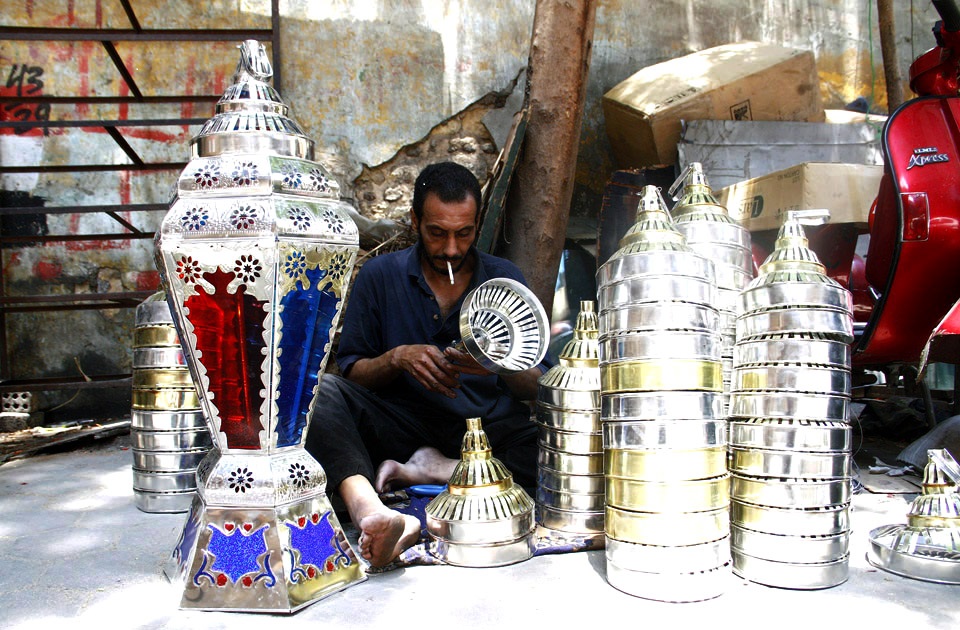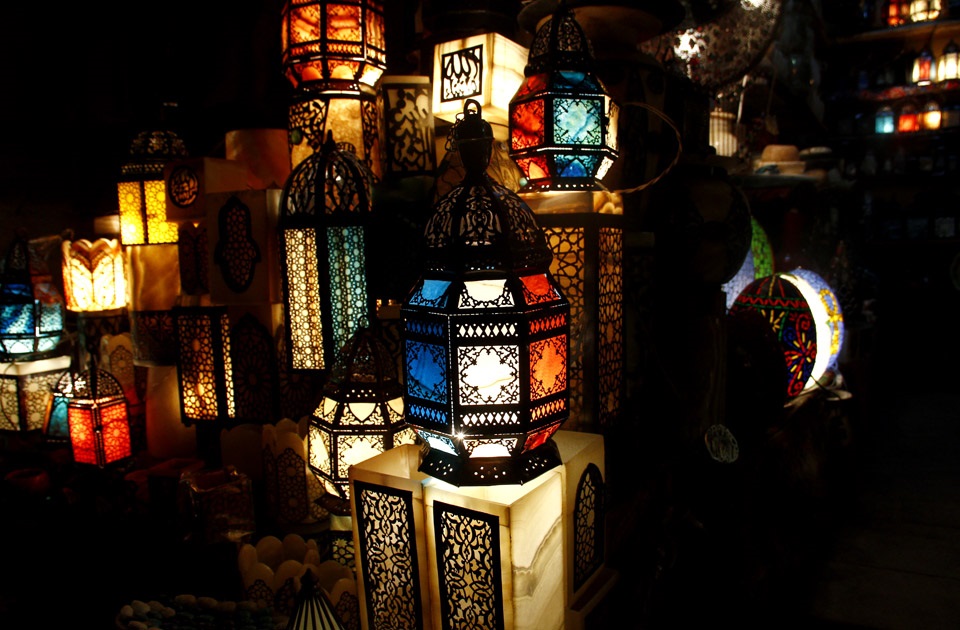
Imported mass-produced Ramadan lanterns (Photo: Mai Shaheen)

A man makes Ramadan lanterns by hand in Sayyida Zeinab workshop (Photo: Mai Shaheen)
Ramadan is the month of piety and generosity. The family gatherings, the television shows, and sweet consumption that accompanies it, not to mention the 30 days of street banquets that provide free iftars (the breaking of the fast) for the underprivileged.
But in Egypt, it is also the month of colourful lanterns (Fanous Ramadan) that dangle from balconies with shimmering decorations and that make even the smallest underprivileged alleys beautiful. However, this year the Ramadan lantern took a political flair, making Egypt's newly elected president, Abdel-Fatah El-Sisi, their leading figure.
According to the National Folklore Archive, Ramadan lanterns originated on 5 Ramadan 358 hegira (24 July 968 AD) when the Fatimid Caliph Al-Mo’ezz entered Cairo at night and the populace carried torches and candles as they went out to welcome him.
In order to shield the candles from the wind, some placed the candles on a wooden platform and wrapped the platform with palm fronds and leather. The Egyptian tradition lived on to date.
I am grateful for Ramadan lanterns, the simple and the complex, and even the ones with garish music. Grateful to the Egyptian tradition that survived centuries and crossed borders. The fanous, in all its shapes and forms, from the tin lanterns with candles down to ones made in China, is an enlightening gesture that combats darkness with grace and beauty across the ages.
All Ramadan lanterns are enchanting because all lanterns bare light.
Ramadan Karim.

Shops display Ramadan lanterns in El-Hussein neighborhood (Photo: Mai Shaheen)
Short link: